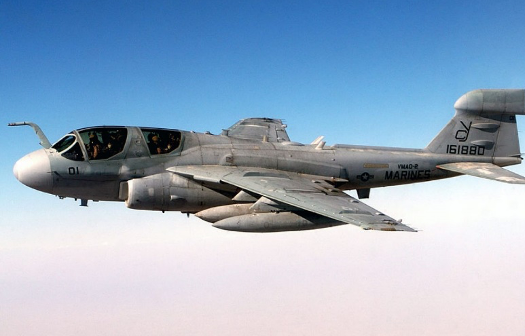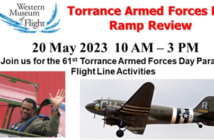On 8 December 1993, I had a pretty scary flight. We launched off USS Saratoga during our Composite Training Unit Exercise (COMPTUEX) workup cycle, with Bobby Lett as the pilot, LCDR Paul Dillman in the right seat Electronic Countermeasures Officer (ECMO1), I was in the back right seat, ECMO2, and the Squadron XO, CDR Gary Hicks, was in ECMO3. Shortly after takeoff, Bobby noticed that the left engine oil pressure was fluctuating. I think he just happened to notice it out of the corner of his eye. The fluctuation was out of limits, and Bobby shut the engine down, according to Naval Air Training and Operating Procedures Standardization (NATOPS) procedure.
Paul “broke out the book” (the NATOPS pocket checklist) and went through the procedures for an engine failure at night. The procedure directed that the ram air turbine (RAT), a wind-driven generator located in the left wing, be deployed. As soon as the RAT came out, the XO pointed out that the RAT was on fire. Bobby said, “Well I’m not going to put the damn thing back in the wing.” We all decided it was a good idea to let it keep spinning until the fire was out.
We called back to the ship on “button 14” (representative frequency) to get our squadron Carrier Air Traffic Control Center (CATCC) rep up on frequency. Our CO, Skipper Lee Holbrook came on the radio, and Paul explained the situation. Skipper Holbrook said, “Don’t bring that piece of crap back on this aircraft carrier! Take it somewhere else!” We were 250 miles from Marine Corps Air Station (MCAS) Cherry Point, North Carolina, the United States Marine Corps (USMC) base for Prowlers on the East Coast. On one engine, we limped there. It was December over the middle Atlantic, we weren’t wearing anti-exposure gear, and none of us wanted to go swimming that night.
It was an uncomfortable feeling flying to Cherry Point. We went through all the checklists that were appropriate. We looked at what was left functioning and tried to figure out if we’d lost anything else. The airplane started to ‘die’ as we got closer to North Carolina. As we crossed the coast line, we heard a loud shriek, as our air conditioning/environmental system stopped working.
A single-engine landing is challenging enough. However, Bobby decided to check out the flaps to see if they worked, and they didn’t. So now we were looking at a single-engine, no-flap landing. That was going to be really challenging. Bobby decided to land using the short field arresting gear with our tail-hook deployed. With a no-flap, single-engine configuration, the landing speed was going to be close to the maximum tire speed and faster than the limit for the arresting gear at Cherry Point. But we decided we’d lose enough speed before the hook engaged the cable, and landed that way.
We landed safely, taking a “trap” on Runway 14 Left. We were towed to one of the Prowler hangars, where the Marine Corps maintenance personnel told us we had a sixth stage compressor bearing failure. That same malfunction had caused a Marine Prowler crew to have to eject the year before. If the engine had been running for about 15 more seconds, it would’ve come apart and we would’ve had to eject into the cold Atlantic Ocean that night.
The next day, we found out the plane was worse than what we thought. Due to the RAT fire, a bunch of circuit breakers in the “cheek panel” (not accessible to the crew in flight) had melted. That was why we lost the flaps and the environmentals. It took several days to get the plane fixed. The rest of our squadron was going to beat us home from COMPTUEX. And we were going on cruise for six months soon.




